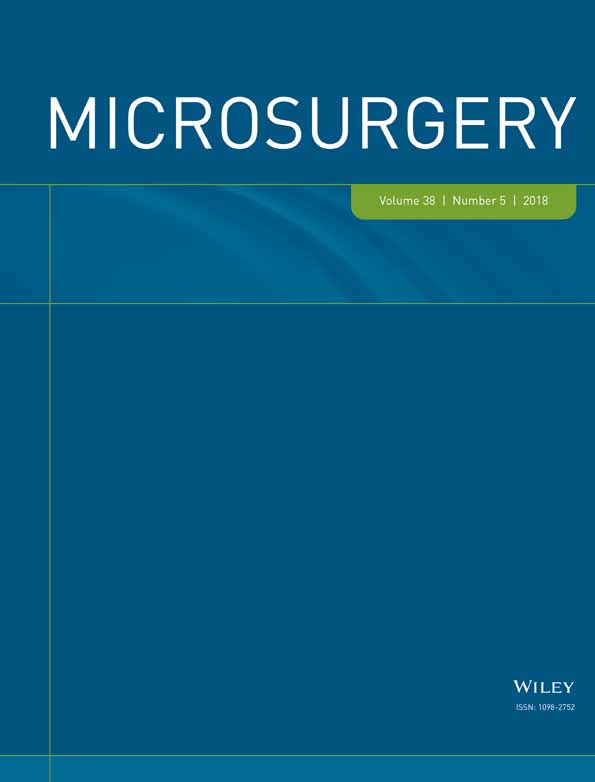Evaluation of the single medial circummuscular perforator DIEP flap: Outcomes and comparison to traditional transmuscular single perforator flap
Abstract
Introduction
Successful breast reconstruction using deep inferior epigastric perforator (DIEP) flaps depends on optimal perforator choice. Circummuscular wraparound medial perforators allow for no rectus dissection and minimal fascial incisions, often presenting as an ideal option. The aim of our study is to evaluate outcomes of the single medial wraparound perforator flap in comparison to more traditional transmuscular single-perforator DIEP flaps.
Patients and methods
A retrospective chart review was conducted of all DIEP flaps performed by the senior author from 2011 to 2016, yielding 269 flaps on 157 patients. For this study, we included all patients who underwent reconstruction of the breast(s) and possessed circummuscular perforators arising from the DIE vessels. A control group consisted of all consecutive patients with transmuscular one-perforator DIEP flaps. Patient details and their postoperative outcomes were collected.
Results
In our study, eight patients (5.1%) were of the medial wraparound variety. Sixteen control patients (10.2%) with similar comorbidities had flaps that were of the more traditional single perforator transmuscular variety. There was a slight trend toward decreased operative time in the medial wraparound group, however, it was not found to be statistically significant (536 ± 81 vs. 572 ± 84 min, P = .377). Complication profiles were similar between groups (25.0 vs. 18.8%, P = .722), with no increased rates of fat necrosis in the wraparound cohort.
Conclusion
Based on our findings, using a medial wraparound perforator is a safe and reliable option when compared with a single transmuscular perforator DIEP flap. Choosing the wraparound perforator may show benefit as it eliminates muscular dissection and nerve damage, and tends to minimize fascial incision length.
CONFLICTS OF INTEREST
None of the authors, nor their close family members, have a financial interest in any of the products, devices, or drugs mentioned in this manuscript. Furthermore, the authors declare that no commercial associations or financial disclosures exist that might pose or create a conflict of interest with information presented in this manuscript. No funding was received for the work presented in this manuscript.




